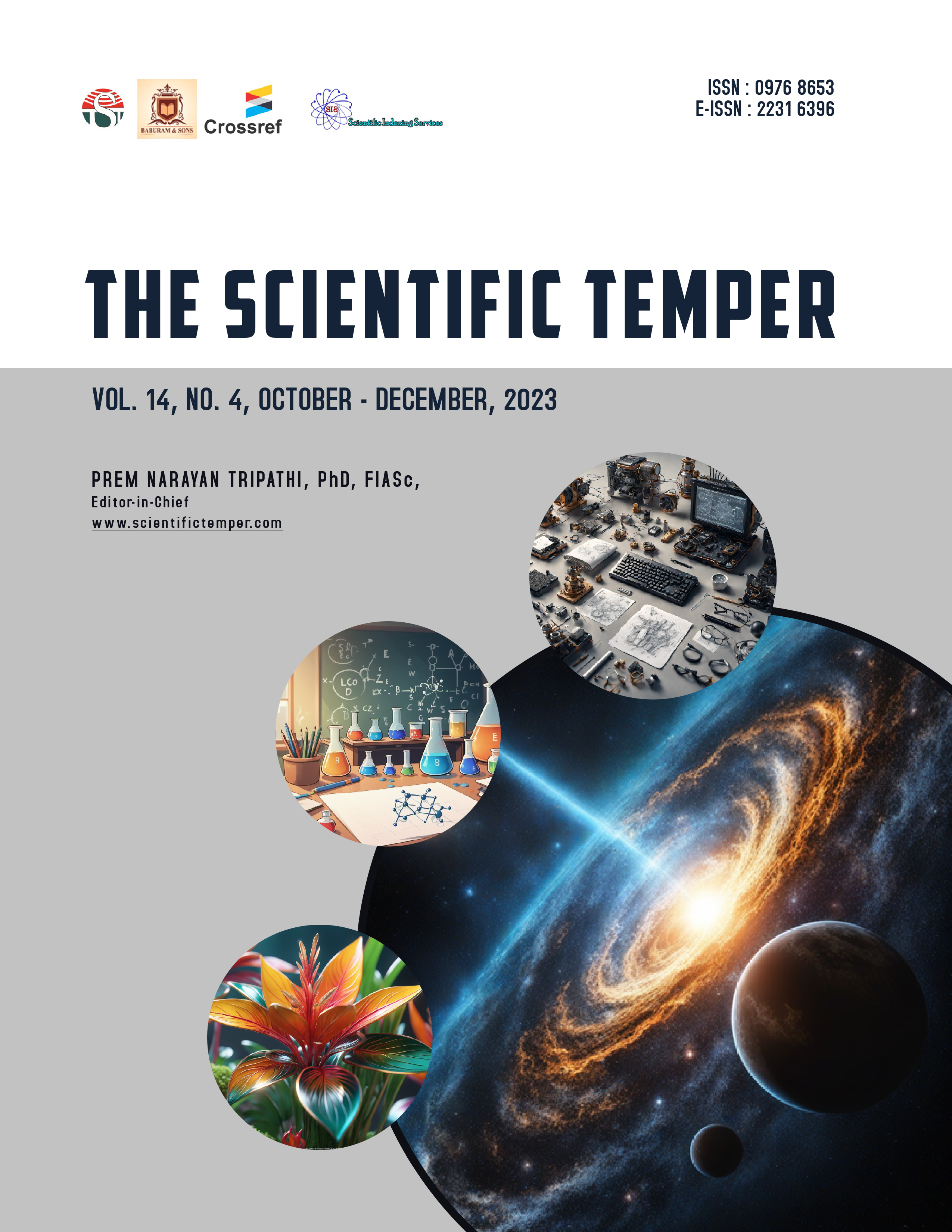Effects of bended NPSB fertilizer rates and varieties on growth and yield of garlic (Allium sativum L.) in Gummer district, Central Ethiopia
Downloads
Published
DOI:
https://doi.org/10.58414/SCIENTIFICTEMPER.2023.14.4.10Keywords:
Kuriftu, Tsedey, HL, NPSB, YieldDimensions Badge
Issue
Section
License
Copyright (c) 2023 The Scientific Temper

This work is licensed under a Creative Commons Attribution-NonCommercial-ShareAlike 4.0 International License.
Garlic is grown by farmers using locally available low yielder traditional cultivars with little or no fertilizer input, which results in a low yield in the study area. Therefore, this experiment was conducted to evaluate the responses of garlic varieties to different rates of NPSB. Garlic varieties (Kuriftu, HL (Holeta), Tseday, and ‘Tuma’) and four levels of NPSB fertilizer rates were arranged in 4X4 factorial and RCBD design was used in three replications. The interaction between fertilizer and variety had a significant effect on plant height, leaf number, and nearly all yield and yield-related parameters. The highest total bulb yield was obtained from variety Kuriftu (8.81 t ha ̄ ˡ) at the N: P2O5: S: B rate of 46.1:91.9:16.9:0.2kg ha ̄ ˡ. The maximum plant height (74.17cm) was recorded from variety HL at 46.1:91.9:16.9:0.2 kg/ha N: P2O5: S: B and the highest number of garlic leaves (10.33) was obtained from variety Kuriftu, which received the highest N: P2O5: S: B at rate of 65:129.7:23.9:0.3 kg/ha. The highest and statistically significant bulb weight was recorded equally from varieties Kuriftu, Tsedey, and HL (43.42g, 42.77g, and 41.92g, respectively). Statistically similar and highest marketable bulb yields (8.14 t ha ̄ ˡ and 7.36t/ha) and total bulb yields (8.81 t ha ̄ ˡ and 8 t ha ̄ ˡ) was recorded from variety Kuriftu interacted with 46.1:91.9:16.9:0.2 kg ha-1 and 65:129.7:23.9:0.3 kg/ha, respectively. Thus, the combined applications of 46.1:91.9:16.9:0.2 kg ha-1 NPSB and variety Kuriftu can be provisionally recommended for garlic producers in Gummer district.Abstract
How to Cite
Downloads
Similar Articles
- SHAHID SAMI SIDDIQUE, MOHD ARIF, RAM BABU, RASHID HUSSAIN, INTEGRATED MANAEMENT OF BRINJAL SHOOT AND FRUIT BORER, LEUCINODES ORBONALLIS GUEN. , The Scientific Temper: Vol. 2 No. 1&2 (2011): The Scientific Temper
- Krishna Deo Verma, EFFICACY OF SOME NOVEL PESTICIDES AGAINST MUSTARD APHID , The Scientific Temper: Vol. 8 No. 1&2 (2017): The Scientific Temper
- Basant Narain Singh, NITROGENOUS FERTILIZATION LEVELS AND ROOT MYCORRHIZAL COLONIZATION ON PLANT GROWTH AND PRODUCTIVITY IN WHEAT CROPS , The Scientific Temper: Vol. 9 No. 1&2 (2018): The Scientific Temper
- Amresh Kumar Singh, Manjit Singh Chhetri, Pushyamitra Mishra, Toughness and Ductile Brittle Transition Temperature of Different Mineral Filler Reinforced TPOs Composites , The Scientific Temper: Vol. 13 No. 02 (2022): The Scientific Temper
- Brijesh Pathak, Effects of Uranium on Growth Performance in Vigna unguiculata (L.) , The Scientific Temper: Vol. 13 No. 02 (2022): The Scientific Temper
- Rajesh Kumar Singh, Genetic Variability in Aromatic Rice , The Scientific Temper: Vol. 13 No. 02 (2022): The Scientific Temper
- KANAKLATA ., HOST PREDILECTION STUDIES IN RANGEENI STRAIN OF LAC INSECT (KERRIA LACCA KERR) , The Scientific Temper: Vol. 10 No. 1&2 (2019): The Scientific Temper
- Suman Kumar Saurabh, Prashant Kumar, Per Recruit Models for Stock Assessment and Management of Carp Fishes in the Pattipul Stream, Sheetalpur, Saran (Bihar) , The Scientific Temper: Vol. 12 No. 1&2 (2021): The Scientific Temper
- R. P. Singh, R. Chandra, Bikramaditya ., Efficacy of Phosphorus and PSB Response in Different Varieties of Summer Moongbean and Its Residual Effect on Fodder Sorghum in Western Uttar Pradesh , The Scientific Temper: Vol. 11 No. 1&2 (2020): The Scientific Temper
- Anupam Sinha, Rhizome Rot Disease of Ginger (Zingiber officinale Rosc.) and its Bio-control Strategy , The Scientific Temper: Vol. 11 No. 1&2 (2020): The Scientific Temper
You may also start an advanced similarity search for this article.



